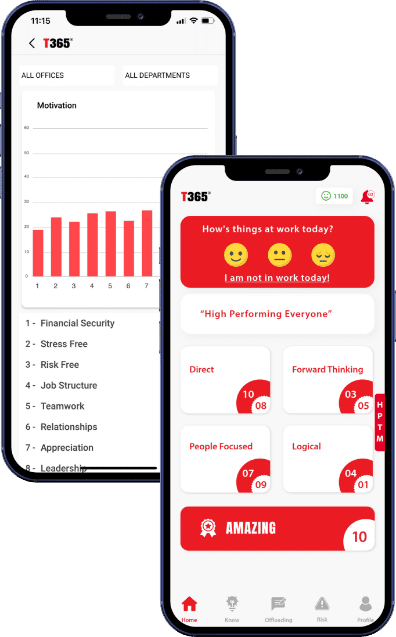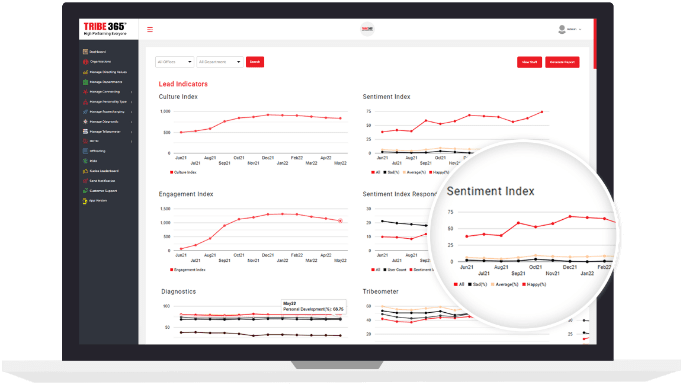Understand and Implement Cultures For Growth and Performance
Culture is a word that is banded around but rarely forms an applicable formula for performance. This exploration will summarise everything needed to get culture right for any environment and give you sufficient information to support the right culture developing around you all of the time.
What is Culture?
Culture is the summary of an environment. The word culture allows us to include absolutely everything and anything related to supporting a functioning environment (team, organisation society etc.). This can range from the way everyone socialises, the importance of possessions all the way to the details of how activities are performed. Whilst Culture is a vast umbrella reflecting an environment, the defining factors as to how well the culture performs, evolves and grows comes down to two variables:
- Shared Belief: The defined purpose of why everyone has come together and stays together
- Autonomy: The commitment to maintaining as autonomous an environment as possible

Why is Culture Important?
Culture is the root of all understanding of where teams, organisations, societies are and starting to understand the likelihood of growth, performance and evolution.
Why is Shared Belief critical to successful cultures?
It all comes down to people and brains. There is always Belief in the brain, conscious and pre-conscious. For any of us to put everything we can into an activity the belief must be as high a level as we can. Fear is a very easy trigger to manipulate here, however if we want great stuff (sustainability, continuous improvement etc.) fear is pretty useless.
Be aware, the moment that there is conflict with the belief in an activity the result is disruption – initially potentially invisible, but over time potentially catastrophic.
How do we manage Shared Belief?
Shared belief has been visibly managed, some may suggest abused, by leaders throughout history and up to the present day. Identifying a common threat and overplaying it has been a huge element of bringing teams, organisations and factions of societies together. The sad truth is that if belief is solely focused on without the focus or understanding on how to manage autonomy there will be a gradual, and potentially volatile, disengagement. This is because brains are re-wiring and re-generating constantly. No one thing explains everything and oversimplification of our belief/focus as a team can lead to disengagement if there is no adjustment at the top.
A cautionary note is that playing into fear is a dangerous game as initially there could be huge buy in but over time as people unravel the focus there may be a feeling of distrust and disengagement as brains are likely to feel manipulated. It is therefore important to ensure balanced momentum is always explored and sought so there isn’t the “Boom” and “Bust” feeling to a journey, and nobody is positioned to suffer distrust. We will always have leanings towards where our challenges are and what the answer is, the feelings are unlikely to be entirely incorrect but neither are they likely to be 100% right, so we must always involve as many people as we can when defining what binds us together to deliver as balanced a cause as possible, it will always need to evolve as our brains are evolving even at this very moment.
Why is Autonomy critical to successful cultures?
It all comes down to people and brains.
Whilst Belief is a default component to brain functionality autonomy is a more deliberate and conscious position.
Taking control of your autonomy as an individual, team and organisation (environment) is a must for sustainability, innovation, growth, resilience, continuous improvement and speed.
The brain is a vast vehicle built for survival, with only a small part reserved for conscious deliberation. Anything that doesn’t match your brain’s predictions is a potential threat/risk. Anything viewed as a threat/risk triggers chemical based responses. Chemical Based responses have less predictable outcomes. We can use our conscious thought to influence the wiring and firing in our brain.
This all means that if we want to deliver more predictably positive outcomes in life we must all take a positive role in our thinking about our thinking, and utilise our conscious part of the brain to influence our actions and constantly improve.
How this translates from individual brains to teams and organisations, as well as society, is that our brains are all the same in constitution and base configuration and it is a question of scale. We must all create environments where we can all thrive, in ourselves, in our teams and within our organisations/environments.
How do we manage Autonomy?
The default position for the brain is a series of wiring and firing releasing chemicals that drive actions. The wiring is pre-determined by everything an individual may have had pre-configured, experienced or been exposed to throughout their lives. The resulting chemicals and actions can be very unpredictable and at times incredibly conflictive.
If we want to create more predictable environments we must start to get involved with the wiring and firing patterns and influence our actions for more deliberate and positive outcomes.
This requires us to understand our brain activity in the first place (Our partners Duxinaroe – BTFA™).
When we have understood the basics of Neuroscience we can start to fully understand the importance of taking more control of our journeys.
The question of autonomy is quite fascinating because in reality we are all fully autonomous, however it doesn’t always feel that way. Sometimes our emotions (chemicals) get the better of us (fight or flight etc.) and we aren’t consciously dictating the way forwards, however we always have the ability to take control.
If we exist in environments that don’t prioritise our decision making process (our brains, our autonomy) then conflict starts to happen, maybe seemingly small and maybe very individually internal initially, over time this can be catastrophic for our individuals, environments, societies (conflict, poor mental health etc.).
The funny thing is, whether an environment recognises this or not, brains will be adjusting as they need to balance where required (survival), where no clear purpose exists our brains will create one (I do this because I am paid, they wouldn’t ask for that if it wasn’t needed etc.) and where autonomy is lacking and more control is in place choice to participate will exist, albeit sometimes with the lowest energy levels, leading to drab and dull existences.
To combat all of the lack of autonomy there needs to be three workstreams:
- Environments/Organisations must provide the structures and data to support autonomy
- Teams must have leaders who support and reinforce autonomy
- Individuals must understand and own the behaviours to own their autonomy
How to manage Autonomy Individually
Our brains are constantly wiring and firing and re-wiring and firing. There is little that can be 100% predictable with such activity. When we apply ourselves to any activity there are 5 spaces we need to consider if we are to deliver any work to the best of our ability:
- Do I buy into what I am doing (Belief)
- Are I prioritise myself fully (Balance)
- Do I see everyone and everything around me positively to build forwards (Inclusiveness)
- Do I buy into the way things are done (Structure)
- Do I value and explore my emotions as I experience them (Honesty)
These represent the 5 HPTM® systems and if left unmanaged our natural wiring and firing patterns will interfere with our focus and the outcomes are less predictable, we can consciously manage this to keep applying ourselves to the maximum in everything we do.
Consciously aim for the following:
- Believe 100% in everything you do (Belief): There’ll be a reason you do anything – find it and build on it. If you exist in an organisation, link everything to the organisation Vision.
- Prioritise yourself 100% (Balance): Don’t dismiss/devalue your wants and needs, manage them with everyone around you all of the time; if you push them down they are not managed they are stealthily interfering with your focus
- Value everyone and everything to build forwards (Inclusiveness): View everyone as a super computer to help shape everything moving forwards – that’s the only way we can say we’ve done everything we can with everything we’ve got, right? Value everything around you as an output of everyone and everything gone before, how do you use everything to build forwards in the best way?
- Respect all structure and help it evolve (Structure): All structure is a result of brain activity from you or others – respect it all the time, if it needs to evolve, help it evolve
- Offload the moment things occur, Express don’t Suppress (Balance): Any thoughts, feelings, emotions find a way to express as quickly as possible with everyone around you. All your emotions, thoughts, feelings are a result of your supercomputer brain – respect it and explore as quickly as you can.
Each one of the 5 systems (Belief, Balance, Inclusiveness, Structure, Honesty) will require constant and balanced management to push towards maximisation as the “Survival” mechanism within your brain is likely to present conflict as there is so much to consider in modern life and brain processes are vast. The 5 HPTM® systems act as a simple starting space to start consciously considering your involvement in everything you do.
In collaboration with the APM (Association for Project Management) we have supported the #OwnYourAutonomy drive which is a public facing awareness piece to help explore the idea of owning your autonomy on a more global scale.
How to manage Autonomy in Teams
The secret to managing autonomy in teams is having supportive leaders who understand the importance and basics and some finer points of brain function (Duxinaroe – BTFA™) and understand the 5 HPTM® Systems and prioritise constant focus.
A daily focus list for teams could be:
- Does everyone still buy into what we are doing? (Belief) Does everyone see the importance? Do we need to define it better? Remember buying into why we are doing something is essential if we want to feel great about what we do.
- Is everyone prioritising themselves 100%? (Balance) Does anyone want to be elsewhere? Does anyone need anything etc.? Remember if we don’t prioritise ourselves 100% we will be distracted in some way, prioritise yourselves and manage with everyone around – there’ll always be a way to support each other.
- Does everyone see everyone and everything around them positively? (Inclusiveness) Has anyone upset you etc.? Remember if anyone does anything it is a product of their brain function, rush to understand not to be offended. If we don’t see things and people around us positively it impacts our brain and we are less able to focus on what we need to achieve. Reset and remember everyone and everything is a product of brain function and we are all doing the best we can with what we’ve got, how can we involve everyone and everything to build forwards as positively as possible? If anyone is left behind there can be huge conflict and the bottom line is we can only deliver the best we can with everyone and everything around us if we involve everyone and everything, right?
- Is everyone respecting all structure and helping it evolve? (Structure) Has anyone found any structure frustrating? Have we explored how we help it evolve? Remember, all structure will be where it is to try and support the best moving forwards, respect that and engage 100% to help it evolve. If we don’t there will only be uncertainty of ways of doing things and likelihood of continuous improvement and performance is removed.
- Is everyone offloading the moment things occur? (Honesty) Thoughts? Ideas? Emotions? Remember we have super computers on board (brains) it is only if we tap into the full potential of the brain that we are truly able to hit the highest performance we are capable of. We can move quicker.
If we shape leaders who can coach team members to be autonomous and shape direction we will have environments poised for awesomeness.
How to manage Autonomy in Organisations
Similar to teams we must have Leaders, C-Suites, Directors and Owners who understand the importance, basics and finer points of brain function (Duxinaroe – BTFA™) and understand the 5 HPTM® Systems and prioritise constant focus.
The structures to support the 5 HPTM® systems would look as follows:

Systems Summarised
| System | Focus | Artefacts | Activities | Optimisation |
| Org. Belief | Belief prioritised and managed at individual, team and organisation levels | Vision, Mission, Focus, Beliefs, Values, PurposeBrand GuidelinesBrand Book | Recruitment1:1’sSurveysTeam MeetingsPeer to Peer reinforcementetc. | 100% of workforce engagedDaily ReinforcementData SupportedDaily Individual ReflectionWeekly Team Performance ReviewMonthly Organisation Performance Review |
| Org. Balance | Balance prioritised and managed at individual, team and organisation levels | Wellbeing etc. | Recruitment1:1’sSurveysTeam MeetingsPeer to Peer reinforcementetc. | 100% of workforce engagedDaily ReinforcementData SupportedDaily Individual ReflectionWeekly Team Performance ReviewMonthly Organisation Performance Review |
| Org. Inclusiveness | Inclusiveness prioritised and managed at individual, team and organisation levels | Equality, Diversity and Inclusion etc. | Recruitment1:1’sSurveysTeam MeetingsPeer to Peer reinforcementetc. | 100% of workforce engagedDaily ReinforcementData SupportedDaily Individual ReflectionWeekly Team Performance ReviewMonthly Organisation Performance Review |
| Org. Structure | Structure prioritised and managed at individual, team and organisation levels | Policies, Procedures, SOP’s etc. | Recruitment1:1’sSurveysTeam MeetingsPeer to Peer reinforcementetc. | 100% of workforce engagedDaily ReinforcementData SupportedDaily Individual ReflectionWeekly Team Performance ReviewMonthly Organisation Performance Review |
| Org. Honesty | Honesty prioritised and managed at individual, team and organisation levels | Risk Management Systems | Recruitment1:1’sSurveysTeam MeetingsPeer to Peer reinforcementetc. | 100% of workforce engagedDaily ReinforcementData SupportedDaily Individual ReflectionWeekly Team Performance ReviewMonthly Organisation Performance Review |
Summary
The culture of our environment will dictate whether we thrive or not. Culture comes down to two core components: Belief and Autonomy.
Environments that want to thrive must put in place:
- A programme for individuals to take ownership of their autonomy (#OwnYourAutonomy)
- Leaders who understand some of the finer points of neuroscience (Duxinaroe – BTFA™) and who support and reinforce autonomy in individuals and teams
- Organisations which implement structures to support autonomy and back it up with data with daily, weekly and monthly reviews
Here at Tribe365® we support organisations, teams and individuals to thrive and love what they do and find their Vibe.
Our Tribe365® app delivers all the structure, engagement and data required to support optimal culture for growth and performance. The Tribe365® app costs £4/team member/month. Reach out if you need support.

Interested in finding out more?
Book a meeting in with the Tribe team
today on +44 (0) 1325734847 or at
team@tribe365.co

















